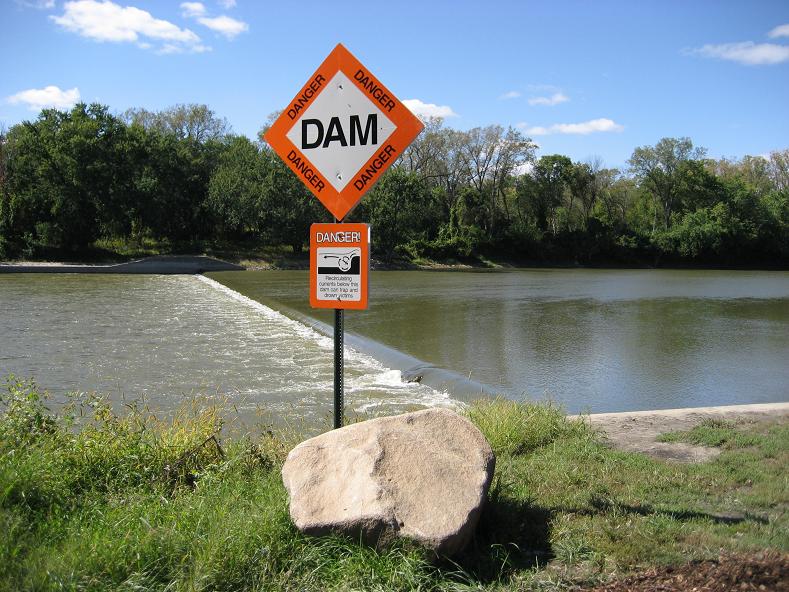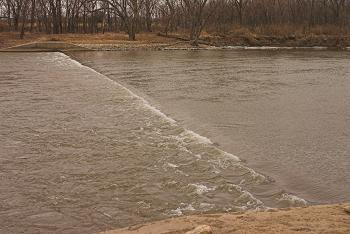Some more photos of low head dams. Some of these dams look harmless, even the mild ones seem to have killed people however. You get caught in the hydraulic and repeatedly pulled under to exhaustion, you can be caught by submerged debris at the base of the dam and/or hit by debris sweeping over the dam. If the waters are cold, hypothermia can sap your strength as well These dams can be hard to see from upstream and you can be in them before you know it.
 http://www.fremontrescue.org/low-head_dams.htm
http://www.fremontrescue.org/low-head_dams.htm

"Low-Head Dam - Envision a horizon line with a riverwide keeper at the base. These dams are often small in size and appear runnable. They are not. You will die. Don’t even think about it, portage these killers."
http://connecticutwatertrails.com/CW...erminology.htm

and

From:
http://www.iowawhitewater.org/

"I've seen washing-machine-like turbulence in rivers below low-head dams. If you dumped in the wash below such a dam, it looks like you could go round and round just about forever. Am I right?
You sure are, Ric! ALL low-head dams and weirs are dangerous, but some are even more dangerous than others. The risk to life is greatest when the lip of the dam is smooth and the volume of water flowing over the drop is high—as it probably will be in springtime.
(The drop needn't be very high, though. Six-inch-high weirs have drowned people.) A dangerous dam will have a distinctive "reversal"—a sort of trough in the river—extending four or more feet downriver from the lip, with a big stopper just below that. As the name suggests, the surface flow in a reversal is UPSTREAM, and the trough is often full of debris. Such reversals are, in effect, river-wide souse holes without exits, and they can be deadly.
All dams should be scouted before running, of course. If the reversal extends more than a few feet downstream, or if you see debarked tree limbs in it, tumbling round endlessly and stripped of all their branches, DON'T EVEN THINK ABOUT RUNNING THE DAM!"
From:
http://www.paddling.net/sameboat/arc...meboat117.html


"There are at least three dangers associated with the hydraulic conditions described above when a person is ensnared in the water downstream of a low-head dam. The first danger is the overflowing water, which generally produces a large dunking force on the person. The second danger is from entrained air, which inhibits the dunked person from resurfacing. Not only is buoyancy reduced, but swimming thrust also loses much of its effectiveness. Finally, when the person does manage to surface, the hydraulic pushes the person into the overflowing water to begin the process again. This results in a perpetual dunking machine that wears out even a strong swimmer in a short span of time.
Floating debris and water temperature represent additional non-hydraulic dangers associated with being trapped in the hydraulic. Floating debris represents a danger if it passes over the dam at the wrong time because it can strike a swimmer, producing blunt force trauma. Once debris passes over the dam, it too can become trapped in the hydraulic and represents an obstacle to a person trying to escape. If the water temperature is low enough, hypothermia can reduce a persons strength and even cause death if trapped in the hydraulic long enough."
From:
http://www.cenews.com/magazine-artic...dams-4918.html